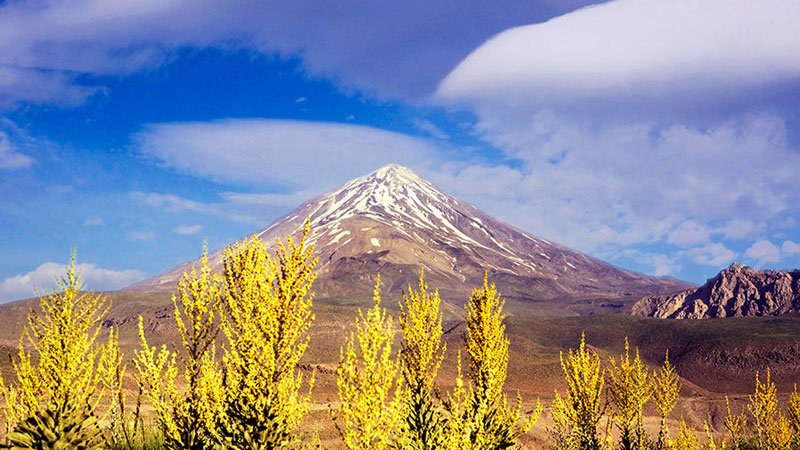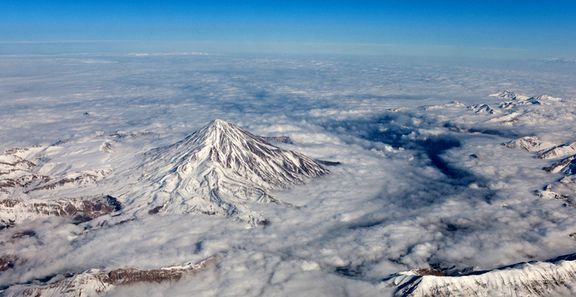Welcome to Damavand By Locals, your trusted gateway to Mount Damavand’s breathtaking landscapes rich cultural heritage, and surrounding regions.
For over six years (2019-2024), we have been dedicated to bringing the wonders of Damavand closer to you, combining affordability, adventure, and authenticity.
As a proud subsidiary of Mahrokh Gasht-e Mahan, a fully licensed Travel Agency & Tour Operator, ltd, Iran, Tehran, our mission is simple:
to make unforgettable experiences accessible to all, whether you’re an avid adventurer, a curious traveler, or someone seeking a unique cultural journey.

Our Story: Passion, Community, and a Fresh Start
Our journey began with a passion for exploration and a deep love for the beauty of Damavand. Over the years, we’ve grown by offering meaningful travel experiences that connect our guests with the land, its people, and its stories. However, like many, we faced challenges during global disruptions, prompting us to pause, reassess, and refine our approach.
Today, we return with a renewed commitment to sustainability, community empowerment, and creating authentic experiences that leave lasting memories.
At Damavand by Locals, we don’t just offer tours; we build connections between travelers and the vibrant culture and nature of Iran.
Our Mission: Adventure with Purpose
At Damavand by Locals, we believe travel is more than just a journey. It’s an opportunity to forge deeper connections—with nature, with communities, and with oneself.
Our mission is to provide transformative travel experiences that:
• Are budget-friendly and accessible to adventurers of all backgrounds.
• Highlight the awe-inspiring beauty of Mount Damavand and its surroundings.
• Contribute positively to local communities and preserve the environment.
From climbing Asia’s tallest volcanic peak to relaxing under a star-lit sky in a serene camping experience, we offer adventures that balance excitement, comfort, and responsibility. By working closely with local guides and service providers, we ensure each trip is steeped in authenticity, mutual respect, and genuine cultural exchange.

Why Choose Damavand by Locals?
At Damavand by Locals, we make every journey unforgettable by combining affordability, authenticity, and expert local guidance. Our tours are designed to help you explore Mount Damavand’s stunning beauty while supporting the local community and protecting the environment. With friendly, experienced guides, you’ll uncover hidden gems and enjoy a unique, personalized experience. Whether you’re climbing the majestic volcanic peak or relaxing in a traditional village, we ensure your safety, comfort, and satisfaction every step of the way. Choose us for an adventure that’s meaningful, memorable, and rooted in the heart of Damavand.

Affordable Adventures
We create high-quality travel experiences that are accessible to everyone. Our tours provide premium services at reasonable prices, ensuring you can enjoy the best of Damavand without overspending.

Local Insights
Our team of knowledgeable locals shares hidden gems, cultural stories, and authentic traditions, offering you an immersive journey into the heart of Damavand’s natural and cultural beauty.

Eco-Friendly Travel
We prioritize sustainability by reducing waste, supporting local businesses, and protecting the environment. Travel with us to leave a positive impact on the community and preserve Damavand’s charm.

Tailored Experiences
From thrilling climbs to serene camping, our diverse tour options are designed to suit adventurers of all kinds. You can customize your trip for the ultimate personalized adventure.

Caring Support
Your comfort and safety matter to us. Our experienced team provides top-notch service and support, ensuring your journey is smooth, enjoyable, and unforgettable.
Tailored Adventures for Every Traveler
We specialize in diverse tours that cater to every interest and experience level:
⇒ Mount Damavand Climbing: Challenge yourself to conquer Asia’s tallest volcanic peak with expert guidance. Perfect for beginners and pros alike.
⇒ Skiing and Backcountry Adventures: Enjoy Iran’s premier skiing destinations or venture off the beaten path for a unique snow experience.
⇒ Cycling and Hiking Tours: Explore the stunning trails and landscapes of Damavand on foot or by bike and save memories from this majesty mountain.
⇒ Camping Under the Stars: Reconnect with nature on serene, star-filled nights in beautiful valleys and gardens surrounding Damavand.
⇒ Cultural Immersion: Visit local villages, learn traditional crafts, and taste authentic Persian dishes in their original style which has never been felt in Iran.

Commitment to Sustainable Tourism
Sustainability is at the core of everything we do:
⇒ Eco-friendly Practices: We take significant steps to minimize waste, promote sustainable transportation, and educate travelers about responsible tourism.
⇒ Community Empowerment: By working with local businesses, employing regional guides, and sourcing supplies nearby communities, we strengthen the local economy.
⇒ Low-Impact Tourism: We design tours to minimize environmental disruption while maximizing cultural enrichment.
⇒ Education and Awareness: Our tours emphasize teaching travelers the importance of sustainable practices.
⇒ Future-Focused Values: Our vision goes beyond tourism. We invest in long-term projects that benefit the environment and local communities.
Join Us on a Journey to Remember
Ready to experience the magic of Damavand? At Damavand by Locals, we offer more than just trips—we offer life-changing journeys that combine adventure, cultural discovery, and sustainability. Let us help you create memories that will last a lifetime.
Book your next adventure today, and discover why Damavand is not just a destination—it’s a way of life. Together, let’s climb higher, explore deeper, and make a positive impact on the world.

